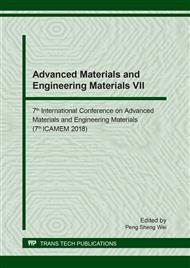p.232
p.238
p.245
p.251
p.256
p.262
p.268
p.272
p.277
Lead (II) Removal from Contaminated Soils by Electrokinetic Remediation Coupled with Modified Eggshell Waste
Abstract:
Electrokinetic remediation deserves particular attention in soil treatment due to its peculiar advantages, including the capability of treating fine and low permeability materials, and achieving consolidation, dewatering and removal of salts and inorganic contaminants like heavy metals in a single stage. In this study, the remediation of artificially lead (II) contaminated soil by electrokinetic process, coupled with Eggshell Inorganic Fraction Powder (EGGIF) permeable reactive barrier (PRB), was investigated. An electric field of 2 V cm-1 was applied and was used an EGGIF/soil ratio of 30 g kg-1 of contaminated soil for the preparation of the permeable reactive barrier (PRB) in each test. It was obtained high removal rates of lead in both experiments, especially near the cathode. In the normalized distance to cathode of 0.2 it was achieved a maximum removal rate of lead (II) of 68, 78 and 83% in initial lead (II) concentration of 500 mg-1, 200 mg-1 and 100 mg-1, respectively. EGGIF (Eggshell Inorganic Fraction) proved that can be used as permeable reactive barrier (PRB) since in all the performed tests were achieved adsorptions yields higher than 90%.
Info:
Periodical:
Pages:
256-261
Citation:
Online since:
August 2018
Authors:
Price:
Сopyright:
© 2018 Trans Tech Publications Ltd. All Rights Reserved
Share:
Citation:


